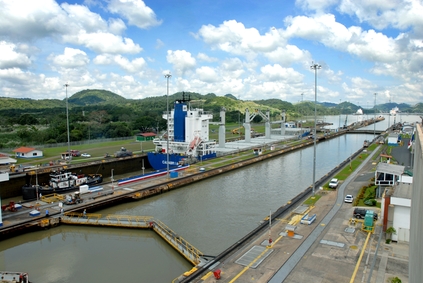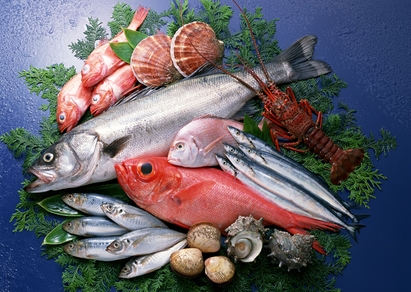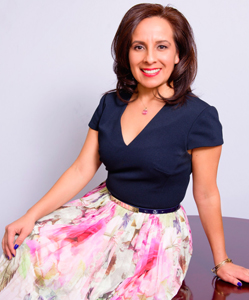The Land of Diversity
 Panama is a small country that acts as a land bridge connecting Central America and South America and allows passage from the Caribbean Sea to the Pacific Ocean. It is a country north of Columbia and south of Costa Rica. It has beautiful landscapes both above and below the water, and is filled with mountains and valleys, lakes, and rivers. In addition, it also has extensive forests. Panama is made up of hundreds of tiny islands with each containing its own slice of paradise. There are miles of uninhabited beaches to explore, and reefs and sandbars to snorkel in and scuba dive. Of course, the best known tourist attraction in Panama is the Panama Canal where cruise ships travel the canal on a regular basis with day trips available for tourists and visitors.
Panama is a small country that acts as a land bridge connecting Central America and South America and allows passage from the Caribbean Sea to the Pacific Ocean. It is a country north of Columbia and south of Costa Rica. It has beautiful landscapes both above and below the water, and is filled with mountains and valleys, lakes, and rivers. In addition, it also has extensive forests. Panama is made up of hundreds of tiny islands with each containing its own slice of paradise. There are miles of uninhabited beaches to explore, and reefs and sandbars to snorkel in and scuba dive. Of course, the best known tourist attraction in Panama is the Panama Canal where cruise ships travel the canal on a regular basis with day trips available for tourists and visitors.
The location of Panama has caused it to have a diversified population. The largest group that inhabits Panama is the “Hispano-Indians,” which are a people of mixed European and Native American blood. These people consider themselves to be the true “Panamanians.” In the United States, many Panamanians reside in South Florida or in Brooklyn. When compared to other Hispanic populations within the U.S., they tend to be concentrated in Army base cities.
There are four other Indian Ethnic groups recognized in Panama (Kuna, Guaymi or Ngawbe, Embera, and Wounaan), in all they account for fewer than 200,000 people. Two small groups of African decedents have also settled in Panama. These are the Afro-Colonials who were brought over as slaves in colonial times. The other group is the Afro-Antillean who came from the Caribbean during the construction of the Panama Canal in search of work.
Although the people here are diversified, the religion in Panama is not. It is believed that 75-85% of the population is Roman Catholic, while the other 15-25% is Evangelical Christian.
A Brief History of Panama
Panama was a country colonized by the Spanish in 1502 and also in 1513. It became a main shipping point during that time. In 1821, Panama joined the revolution against Spain and with Columbia declared its independence. For over 82 years it would struggle to break away from Columbia, eventually doing so. However, in 50 years, this small nation would experience much turmoil within its borders. They had over 50 civil unrests, over 40 ruling administrations, and about 13 U.S. interventions. Finally in 1903, and with U.S. support and backing, they realized their full independence. The U.S. made a deal with Panama ($10 million at the onset and $250,000 yearly) for canal rights. Those fees, however, grew substantially high over the years.
In 1977, President Jimmy Carter signed a treaty giving Panama back gradual control of the canal as well as phasing out all U.S. military bases. For 22 years much strive continued to permeate Panama. General Manual Noriega became a huge player in this arena and created much turmoil, but he was eventually convicted for drug trafficking in the U.S. In 1999, the United States formally handed over the control of this popular canal to the Panamanians.
Dress, Language, and Education in Panama
The traditional dress in Panama is called a Pollera. This dress dates all the way back to 1815; although, it has changed quite a bit throughout the years. It is worn on special occasions by most women (those that can afford it). It is a beautiful, long, fluffy dress made of fine linen cloth. The pollera is sprinkled with many beautiful jewels, gold, and pearls. This dress can cost hundreds or even thousands of dollars to make and is passed down through generations.
The official language of Panama is Spanish, although a variety of languages are spoken and known by many of the residents. Some of the popular dialects of the Indian Ethnic groups are Wounaan, Teribe, Embera, Kuna, and Ngohe-bugle. English is also a common language in this region. As you stroll through this country, you will hear other languages spoken as well. They are Chinese, French, Arabic, and Hebrew.
Education is very important to the people of Panama as they hold the highest literacy rate in Central America. Statistics indicate that over 90% of the population is literate. Most speak and read English well, along with Spanish, Hebrew, Mandarin, and other languages. Amazingly, 95% of their students graduate from high school and most pursue college. Panama has many upscale colleges including five private Universities, one major Catholic University, and the University of Panama. Overall, education is a high priority in this country and by its literacy rate it shows.
Foods Cuisine in Panama
 Due to the diverse cultures sharing space in Panama, the available cuisine can vary. It can go from the familiar to the very exotic. Breakfasts can include deep-fried corn tortillas, eggs, and coffee. There are, of course, many fruits available throughout the country.
Due to the diverse cultures sharing space in Panama, the available cuisine can vary. It can go from the familiar to the very exotic. Breakfasts can include deep-fried corn tortillas, eggs, and coffee. There are, of course, many fruits available throughout the country.
For other meals, you can find various cuts of meat, beans, yucca, plantains, and coconut rice. In the coastal areas, you will find an array of fresh seafood and tropical fruits such as mangos and coconuts. Some of the more common foods are empanadas (flour pastries filled with meat, potatoes, and cheese), sancocho (stew), tamales (meat filled corn dough wrapped in banana leaves), and carimanola (fried yucca with stuffed meat and boiled eggs). Also popular is ceviche; mixture of raw fish, conch, shrimp, cilantro, tomatoes, and onions marinated in lime juice. Ceviche has also become quite a popular dish in the U.S. and is served in many restaurants.
Panama is a tropical paradise waiting to be seen. It is full of adventure and wonder and has many different customs and traditions throughout the country waiting to be explored.




